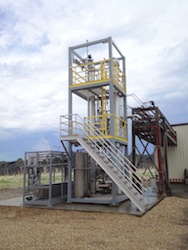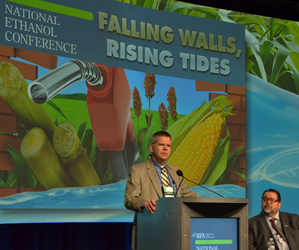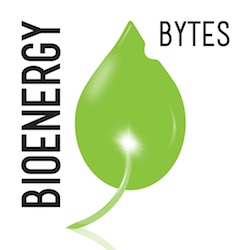On the surface it may seem like the technology for producing ethanol is pretty advanced. But when you talk with Darren Eng, CEO of Greenbelt Resources Corporation, they don’t believe today’s technology is near where it could be so they are continually striving for innovation.
 Unlike the traditional biofuel producers who look at producing 25 million plus gallons per year, and send their ethanol all over the country and in some cases across the wide oceans, Eng says Greenbelt’s strategy is working with local communities to convert their waste to biofuels that are then used locally. And for a small community, a “small-scale,” system can range between 500,000 gallons per year (gpy) up to 2 million gpy. In line with this thinking, under 2 million gpy ethanol modules could soon be the new “big-scale”. In other words, Greenbelt’s technology is the perfect example of “community energy,” or locally owned energy projects, and they can produce modules from 100,000 to 2 million gpy.
Unlike the traditional biofuel producers who look at producing 25 million plus gallons per year, and send their ethanol all over the country and in some cases across the wide oceans, Eng says Greenbelt’s strategy is working with local communities to convert their waste to biofuels that are then used locally. And for a small community, a “small-scale,” system can range between 500,000 gallons per year (gpy) up to 2 million gpy. In line with this thinking, under 2 million gpy ethanol modules could soon be the new “big-scale”. In other words, Greenbelt’s technology is the perfect example of “community energy,” or locally owned energy projects, and they can produce modules from 100,000 to 2 million gpy.
“Our model is for our technology to be used to locally recycle (or process) locally generated feedstocks (ideally waste materials) into products that can be consumed locally,” said Eng. Greenbelt’s target feedstock is waste material and their suite of products include ethanol, filtered water and fertilizer. “So our target market,” continued Eng, “is anyone generating an appropriate feedstock at quantities too small to make it worth transporting long distances but large enough to take advantage of one of our systems.”
Eng explained that their technology can use a wide range of feedstocks to produce cellulosic ethanol and byproducts. Feedstock types include wastes from the ag and food industries; waste beverages and beverage bottling process waste; corn harvested for local dairy cow consumption; non-food alternative energy crop growers; island communities; and developing countries. In addition, he said farming consortiums in remote areas who can aggregate their wastes and/or low value crops and convert them into products they would otherwise have to pay high prices for due to the high cost of transportation because of their remoteness, is also a great target for their technology.
The Greenbelt technology is different than large-scale technologies in several ways. The company provides a commercially viable, small scale, modular, energy efficient feedstock-to-product ethanol production system. The overall system is semi-automated with their distillation and dehydration modules fully automated, explained Eng. “The front-end (typically fermentation) module only requires a minimal amount of manual labor each day for feedstock input. Additionally, the load out of products requires some oversight if not manual handling in some instances,” he added.
A key component to the system’s uniqueness and its high efficiency is the inclusion of a patent pending membrane dehydration module. Greenbelt is the only biofuel company that offers membrane technology. “Membrane use allows for a less complicated system design and requires about a third less energy compared to a molecular-sieve as a result of the complexity,” said Eng.
There is also a slight but simple difference in how it works. Read More
 Tying in to the first part of the theme “Falling Walls, Rising Tides”, the second panel at the 2014 National Ethanol Conference was focused on Breaking Down the Blend Wall.
Tying in to the first part of the theme “Falling Walls, Rising Tides”, the second panel at the 2014 National Ethanol Conference was focused on Breaking Down the Blend Wall.










